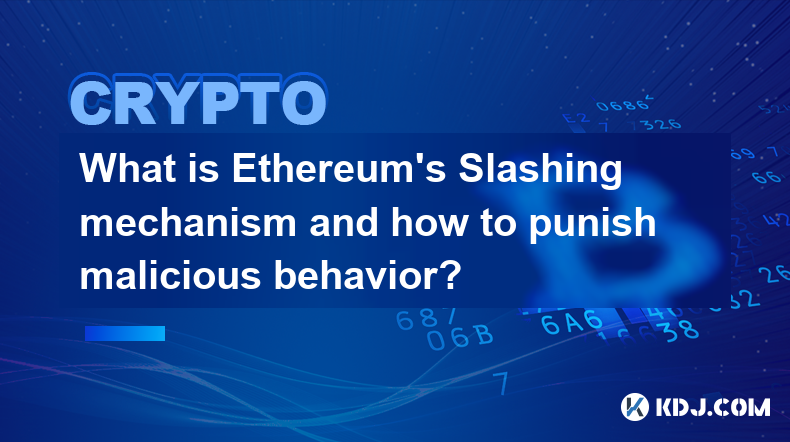-
 Bitcoin
Bitcoin $84,503.0396
-0.26% -
 Ethereum
Ethereum $1,639.9033
1.40% -
 Tether USDt
Tether USDt $0.9998
0.00% -
 XRP
XRP $2.1454
-0.96% -
 BNB
BNB $584.9227
-0.39% -
 Solana
Solana $129.5837
-1.10% -
 USDC
USDC $1.0000
0.02% -
 TRON
TRON $0.2530
0.06% -
 Dogecoin
Dogecoin $0.1604
-3.16% -
 Cardano
Cardano $0.6380
-2.76% -
 UNUS SED LEO
UNUS SED LEO $9.3916
0.76% -
 Chainlink
Chainlink $12.8718
-0.80% -
 Avalanche
Avalanche $20.3150
0.41% -
 Stellar
Stellar $0.2404
-2.02% -
 Sui
Sui $2.2089
-3.82% -
 Shiba Inu
Shiba Inu $0.0...01218
-0.81% -
 Toncoin
Toncoin $2.8401
-1.67% -
 Hedera
Hedera $0.1647
-2.59% -
 Bitcoin Cash
Bitcoin Cash $326.8464
-5.81% -
 Polkadot
Polkadot $3.7405
-0.20% -
 Litecoin
Litecoin $76.9266
-2.88% -
 Dai
Dai $1.0001
-0.01% -
 Hyperliquid
Hyperliquid $15.5994
-1.02% -
 Bitget Token
Bitget Token $4.2932
-0.63% -
 Pi
Pi $0.7411
-0.92% -
 Ethena USDe
Ethena USDe $0.9990
0.00% -
 Monero
Monero $216.0000
4.11% -
 Uniswap
Uniswap $5.4278
-0.64% -
 OKB
OKB $53.3284
-0.96% -
 Pepe
Pepe $0.0...07401
0.70%
What is Ethereum's multi-signature wallet and how to improve security?
Multisig wallets enhance security in the Ethereum ecosystem by requiring multiple signatures to authorize transactions, preventing unauthorized access and potential malicious activities.
Feb 20, 2025 at 02:18 pm

Key Points:
- Understanding the Concept of a Multi-Signature Wallet
- Benefits and Drawbacks of Multisig Wallets
- Requirements for Setting Up a Multisig Wallet
- Step-by-Step Guide to Generating a Multisig Wallet
- Implementing Strategies for Enhanced Security
1. Understanding the Concept of a Multi-Signature Wallet
A multi-signature (multisig) wallet in the Ethereum ecosystem is a specialized type of cryptocurrency wallet that requires multiple private keys to authorize and execute transactions. Unlike regular wallets that utilize a single private key, multisig wallets enhance security by distributing the authorization process among multiple parties or signatories.
Each multisig wallet is defined by a specific "m of n" threshold, where 'm' represents the minimum number of signatures required to approve a transaction and 'n' denotes the total number of signatories involved. For instance, a "2 of 3" multisig wallet necessitates the authorization of at least two signatories out of three.
2. Benefits and Drawbacks of Multisig Wallets
Benefits:
- Enhanced Security: Multisig wallets mitigate the risk associated with single-point failures, as multiple signatories are required to approve transactions.
- Fraud Prevention: With multiple signatories involved, it becomes significantly more challenging for malicious actors to compromise the wallet and engage in fraudulent activities.
- Shared Responsibility: Multisig wallets foster accountability and prevent any single party from having exclusive control over the funds.
Drawbacks:
- Operational Complexity: Setting up and managing a multisig wallet can be more complex than single-signature wallets, especially for users unfamiliar with cryptography.
- Potential Delays: Transactions may experience delays if not all required signatories are readily available to authorize them.
- Signatory Compromise: If one or more signatories are compromised, the security of the multisig wallet can be jeopardized.
3. Requirements for Setting Up a Multisig Wallet
To establish an Ethereum multisig wallet, users require the following prerequisites:
- Access to an Ethereum-compatible wallet software or hardware device
- Private keys or recovery phrases for each intended signatory
- A clear understanding of the "m of n" signature threshold
4. Step-by-Step Guide to Generating a Multisig Wallet
The process of creating an Ethereum multisig wallet involves several steps:
- Choose a Multisig Wallet Platform: Select a reputable and secure multisig wallet software or hardware provider.
- Designate Signatories: Determine the number of signatories required (n) and their respective public addresses.
- Set the Signature Threshold: Define the minimum number of signatures necessary to authorize transactions (m).
- Generate the Multisig Wallet: Utilizing your chosen platform, generate the multisig wallet address based on the defined parameters.
- Fund the Wallet: Transfer Ethereum or ERC-20 tokens to the generated multisig wallet address.
5. Implementing Strategies for Enhanced Security
To bolster the security of Ethereum multisig wallets, consider implementing the following strategies:
- Employ Strong Passwords: Each signatory should utilize unique and complex passwords for their individual private keys.
- Utilize Cold Storage: Consider storing private keys offline in hardware wallets or other secure storage devices to minimize the risk of compromise.
- Monitor Transactions Regularly: Regularly review transaction history and promptly report any suspicious activity.
- Enforce Multi-Factor Authentication: Implement multi-factor authentication (MFA) mechanisms to prevent unauthorized access to multisig wallet accounts.
- Set Transaction Limits: Establish daily or weekly transaction limits to mitigate potential losses in case of unauthorized access.
FAQs Related to Ethereum Multi-Signature Wallets
Q: What distinguishes multisig wallets from regular wallets?
A: Multisig wallets require multiple signatures to authorize transactions, enhancing security and preventing single-point failures.
Q: How do multisig wallets help in protecting against unauthorized transactions?
A: By distributing authorization among multiple signatories, it becomes significantly more challenging for malicious actors to compromise the wallet and initiate unauthorized transactions.
Q: Are there any limitations to using multisig wallets compared to single-signature wallets?
A: Multisig wallet management can be more complex, and transactions may experience delays if not all signatories are immediately available to approve them.
Q: How can I further secure my Ethereum multisig wallet?
A: Implement strong passwords, employ cold storage for private keys, monitor transactions regularly, enforce multi-factor authentication, and set transaction limits.
Q: What other popular multisig wallet platforms are available besides FTX?
A:
- Gnosis Safe
- KMS
- Argent
- Cosigner
Disclaimer:info@kdj.com
The information provided is not trading advice. kdj.com does not assume any responsibility for any investments made based on the information provided in this article. Cryptocurrencies are highly volatile and it is highly recommended that you invest with caution after thorough research!
If you believe that the content used on this website infringes your copyright, please contact us immediately (info@kdj.com) and we will delete it promptly.
- Willem Shroé, CEO of Botanix Labs, on Building a Bitcoin EVM L2, The Future of Bitcoin, and Spiderchain | Ep. 429
- 2025-04-15 01:45:13
- Tether CEO Paolo Ardoino Concludes His First Visit to the United States
- 2025-04-15 01:45:13
- Tether plans to deploy hashrate on OCEAN, a move that will see the crypto ecosystem giant contribute to the decentralization of Bitcoin mining.
- 2025-04-15 01:40:13
- Despite Recent Market Turbulence, 21Shares President Duncan Moir Says Crypto Assets Continue to Offer Valuable Long-Term Diversification
- 2025-04-15 01:40:13
- Tether directs its “existing and future” hashpower to Luke Dashjr's OCEAN Bitcoin mining pool
- 2025-04-15 01:35:13
- Lomond School in Scotland to Begin Accepting Bitcoin for Tuition Payments in the Autumn Semester of 2025
- 2025-04-15 01:35:13
Related knowledge

What is Ethereum’s Slashing mechanism and how to punish malicious behavior?
Feb 20,2025 at 03:08am
Key PointsOverview of slashingDifferent types of slashing in EthereumIncentives and consequences of slashingIdentifying and reporting slashed validatorsOngoing discussions and potential improvementsEthereum's Slashing Mechanism: Punishing Malicious BehaviorEthereum's slashing mechanism is an essential tool for ensuring network security and punishing mal...

What is the verifier node of Ethereum and how to become a verifier?
Feb 19,2025 at 06:00pm
The Verifier Node of Ethereum: A Comprehensive GuideKey Points:What is a Verifier Node?How to Become a Verifier NodeResponsibilities and Rewards of a Verifier NodeMinimum Requirements for Becoming a Verifier NodePotential Difficulties in Running a Verifier Node1. What is a Verifier Node?A Verifier Node is an independent entity on the Ethereum network th...

What is Ethereum’s staking, and how to participate and earn money?
Feb 19,2025 at 04:37pm
Key Points:Understanding Ethereum's Staking MechanismSteps to Participate in StakingBenefits and Rewards of StakingSecurity and Risk ConsiderationsTechnical Requirements and Hardware OptionsPotential Challenges and Troubleshooting TipsFAQs on Ethereum StakingWhat is Ethereum's Staking?Proof-of-Stake (PoS) is a consensus mechanism used in blockchain netw...

What is Ethereum’s DAO (Decentralized Autonomous Organization) and how does it work?
Feb 20,2025 at 03:12am
Key PointsDefinition and Structure of a DAOGovernance and Decision-Making in DAOsBenefits and Use Cases of DAOsChallenges and Limitations of DAOsWhat is Ethereum's DAO (Decentralized Autonomous Organization) and How Does It Work?Definition and Structure of a DAOA Decentralized Autonomous Organization (DAO) is an innovative governance and management fram...

What is Ethereum's multi-signature wallet and how to improve security?
Feb 20,2025 at 02:18pm
Key Points:Understanding the Concept of a Multi-Signature WalletBenefits and Drawbacks of Multisig WalletsRequirements for Setting Up a Multisig WalletStep-by-Step Guide to Generating a Multisig WalletImplementing Strategies for Enhanced Security1. Understanding the Concept of a Multi-Signature WalletA multi-signature (multisig) wallet in the Ethereum e...

What is Ethereum's oracle and how to provide data for smart contracts?
Feb 21,2025 at 01:30am
Key Points:Understanding the concept of oracles in EthereumExploring different types of oraclesDetailed guide on how to provide data for smart contractsAddressing potential challenges and considerationsWhat is Ethereum's Oracle?Oracles are crucial components in the Ethereum ecosystem, enabling smart contracts to access real-world data and off-chain even...

What is Ethereum’s Slashing mechanism and how to punish malicious behavior?
Feb 20,2025 at 03:08am
Key PointsOverview of slashingDifferent types of slashing in EthereumIncentives and consequences of slashingIdentifying and reporting slashed validatorsOngoing discussions and potential improvementsEthereum's Slashing Mechanism: Punishing Malicious BehaviorEthereum's slashing mechanism is an essential tool for ensuring network security and punishing mal...

What is the verifier node of Ethereum and how to become a verifier?
Feb 19,2025 at 06:00pm
The Verifier Node of Ethereum: A Comprehensive GuideKey Points:What is a Verifier Node?How to Become a Verifier NodeResponsibilities and Rewards of a Verifier NodeMinimum Requirements for Becoming a Verifier NodePotential Difficulties in Running a Verifier Node1. What is a Verifier Node?A Verifier Node is an independent entity on the Ethereum network th...

What is Ethereum’s staking, and how to participate and earn money?
Feb 19,2025 at 04:37pm
Key Points:Understanding Ethereum's Staking MechanismSteps to Participate in StakingBenefits and Rewards of StakingSecurity and Risk ConsiderationsTechnical Requirements and Hardware OptionsPotential Challenges and Troubleshooting TipsFAQs on Ethereum StakingWhat is Ethereum's Staking?Proof-of-Stake (PoS) is a consensus mechanism used in blockchain netw...

What is Ethereum’s DAO (Decentralized Autonomous Organization) and how does it work?
Feb 20,2025 at 03:12am
Key PointsDefinition and Structure of a DAOGovernance and Decision-Making in DAOsBenefits and Use Cases of DAOsChallenges and Limitations of DAOsWhat is Ethereum's DAO (Decentralized Autonomous Organization) and How Does It Work?Definition and Structure of a DAOA Decentralized Autonomous Organization (DAO) is an innovative governance and management fram...

What is Ethereum's multi-signature wallet and how to improve security?
Feb 20,2025 at 02:18pm
Key Points:Understanding the Concept of a Multi-Signature WalletBenefits and Drawbacks of Multisig WalletsRequirements for Setting Up a Multisig WalletStep-by-Step Guide to Generating a Multisig WalletImplementing Strategies for Enhanced Security1. Understanding the Concept of a Multi-Signature WalletA multi-signature (multisig) wallet in the Ethereum e...

What is Ethereum's oracle and how to provide data for smart contracts?
Feb 21,2025 at 01:30am
Key Points:Understanding the concept of oracles in EthereumExploring different types of oraclesDetailed guide on how to provide data for smart contractsAddressing potential challenges and considerationsWhat is Ethereum's Oracle?Oracles are crucial components in the Ethereum ecosystem, enabling smart contracts to access real-world data and off-chain even...
See all articles























































































